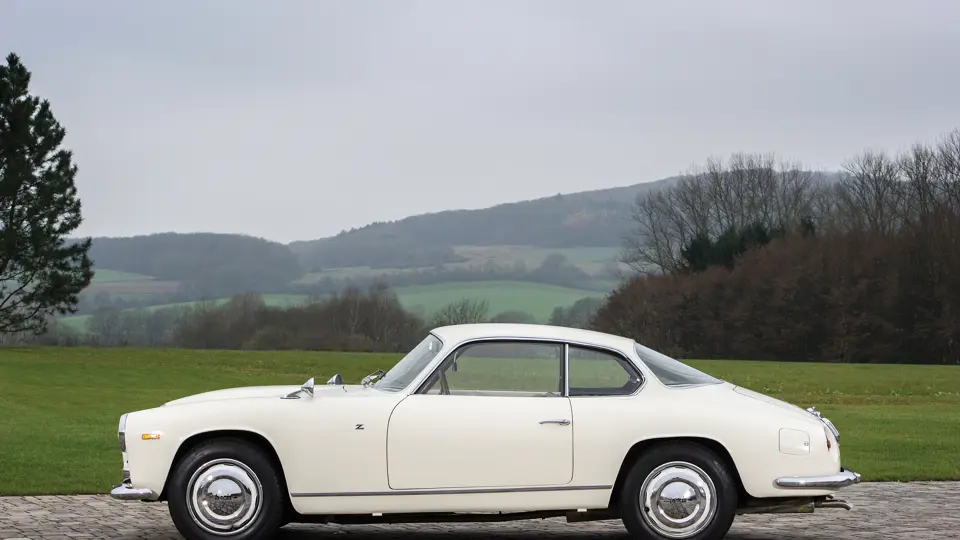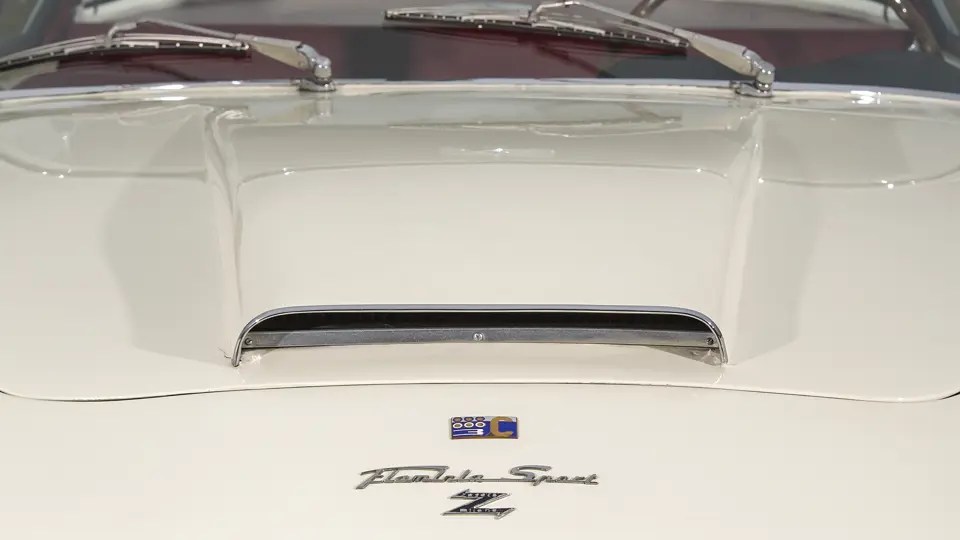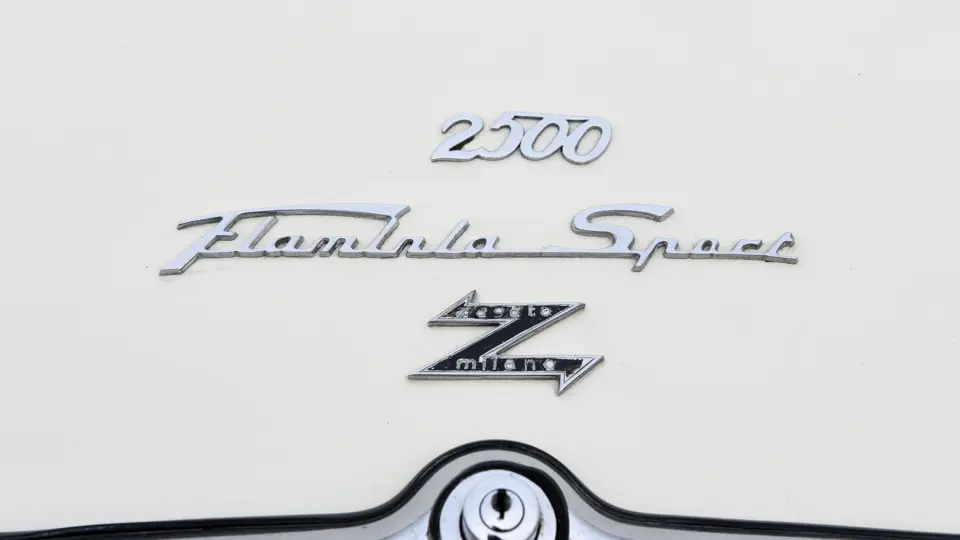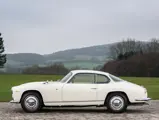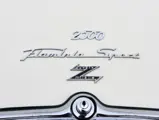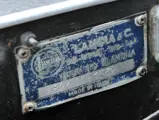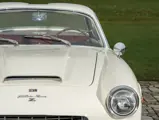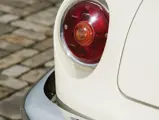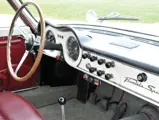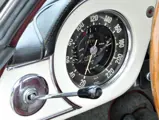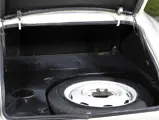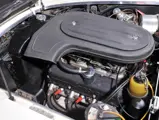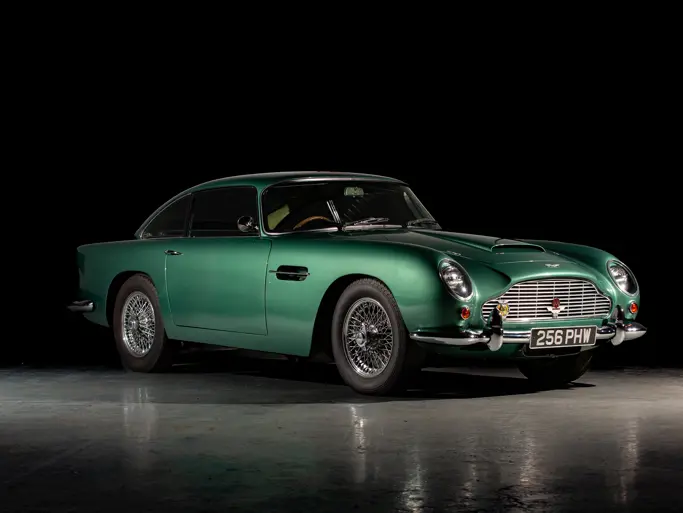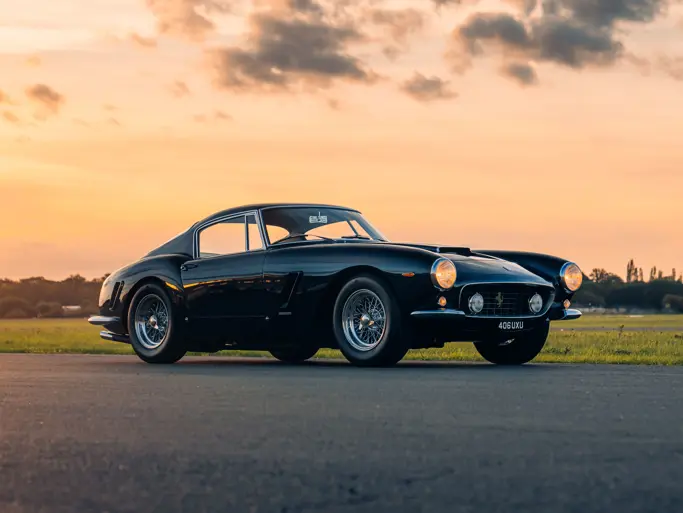
1961 Lancia Flaminia Sport by Zagato
{{lr.item.text}}
€302,400 EUR | Sold
{{bidding.lot.reserveStatusFormatted}}
- Distinctive Zagato coachwork; fewer than 600 built
- Fully restored in 1994; well-documented example
- Highly sought after GT
- Carrosserie spéciale Zagato, moins de 600 construites
- Totalement restaurée en 1994 ; voiture bien documentée
- GT très recherchée
140 bhp, 2,458 cc OHV V-6 engine with three Weber carburettors, four-speed manual rear transaxle, independent front suspension with double wishbones, coil springs, telescopic shock absorbers, and an anti-roll bar, de Dion rear axle with semi-elliptic leaf springs, a Panhard rod, and telescopic shock absorbers, and four-wheel disc brakes. Wheelbase: 2,520 mm.
Moteur V-6, 2 458 cm3, 140 ch, soupapes en tête, trois carburateurs Weber, boîte-pont manuelle à 4 rapports, suspension avant indépendante par doubles triangles, ressorts hélicoÏdaux, amortisseurs télescopiques et barre antiroulis, pont arrière de Dion sur ressorts à lames semi-elliptiques, barre Panhard et amortisseurs télescopiques et quatre freins à disque. Empattement: 2 520 mm
Of Lancia’s jewel-like Appia, which was introduced at Turin in 1953, well-known automotive critic Griff Borgeson once wrote, “Like all products that carried the blue-flag-on-a-lance trademark, the Appia seemed to prove that the policies of Italy’s second-largest automobile manufacturing firm were still determined by engineers, not by cost accountants and stylists”.
Although frequently overlooked and certainly under-appreciated, the rarely seen Lancia Flaminia Sport with coachwork by Carrozeria Zagato is one of the finest grand touring cars of the early 1960s. It replaced the popular Aurelia and was unveiled as a prototype at the Turin Motor Show in October 1956. The luxurious Flaminia, which was built on an Aurelia chassis that had been shortened by 80 millimetres, was available in saloon and coupé form and was bodied by various coachbuilders. Zagato’s coupé, with its distinctive trademark “Double Bubble” roofline, was a true aerodynamic two-seater skinned in aluminium alloy. The doors featured pop-out handles, and the curvaceous body included a low, functional air scoop on the bonnet.
The Flaminia was powered initially by an all-aluminium 2.5-litre, overhead-valve, 60-degree V-6 engine with four main bearings, solid lifters, and hemispherical combustion chambers. With the clutch and four-speed transaxle mounted at the rear, chassis dynamics were excellent. New front suspension employed unequal length wishbones in the front, whilst the rear suspension was a de Dion with inboard brakes. After the first 500 units had been produced, the Flaminia’s drum brakes were replaced with extremely effective vacuum-assisted Dunlop discs at both ends of the car, with separate hydraulic circuits for the front and rear. Production of the Flaminia continued until 1963, although some were reported to be built as late as 1970.
Production figures vary somewhat. The Lancia Flaminia Sport and Super Sport Zagato Register shows a combined total of 599 built between 1959 and 1967. Of those, 205 were of the 2.5-litre covered and open (“Classic”) headlight design, which appeared from 1959 to 1961. Production of the triple-Weber-carburetted “3C” versions is estimated at a total of 174 units with various engine sizes.
Offered here is a well-documented example that has remained in the ownership of the consignor for the past 14 years. The car was originally delivered as a single-carburettor car but was later upgraded to 3C specification, which is a process that is said to have been a common practice at the time and one that was approved by Zagato. In early 1989, the car was purchased in Italy by the current owner. It was used regularly and had participated in the Pirelli Classic Marathon in both 1989 and 1990. In 1991, the owner relocated to Italy and decided to have the car restored by one of the last experts in older Lancias.
After two years of work, the restoration was completed in 1994. Great care was taken not to harm the character of the car, and it was repainted in its original colour of white. Its red leather seating, wood-rimmed alloy-framed steering wheel, and comprehensive instrumentation present a warm and efficient atmosphere for its occupants. To assist in fast touring, there is an overhead-mounted interior rally lamp. Following its restoration, the car was homologated by the Automotoclub Storica Italiano (ASI) and given number A-0634.
It is supplied with documents, which indicate ownership and registration to a Maurizio Zamboni, of Verona, from 1968 to 1995. It was registered with the FIA (Historic Vehicle Identity Form) on 23 May 1990 and then registered for highway use in England by the current owner on 3 July 1990. An MOT Certificate was issued in 2005, and the car was issued identity plate YSU 403. Most recently, the Lancia was serviced, which included adding all-new fluids, and it passed its German TÜV test. The owner states that the car is a very comfortable, spacious, and fast touring machine that has lots of luggage space.
With very few examples surviving, it is a welcome surprise to find a Lancia Flaminia Sport Zagato being offered for sale. These exotic, extremely well engineered and built grand turismos are both a visual delight and an exciting road machine. This one will certainly provide its next discerning owner with a wonderful automotive experience.
À propos de ce joyau automobile que fut l’Appia introduite à Turin en 1953, le célèbre critique automobile Griff Borgeson écrivit : « Comme toutes les productions arborant l’écusson portant la lance au fanion bleu, l’Appia sembla démontrer que la philosophie du deuxième plus important constructeur italien était toujours définie par des ingénieurs et non pas par des contrôleurs de gestion ou des stylists » .
Trop souvent négligée et sans doute sous-estimée, la rare Lancia Flaminia Sport carrossée par Carrozzeria Zagato esr une des plus belles Grand Tourisme du début des années 1960. Remplaçante de la très appréciée Aurelia elle fut dévoilée sous forme de prototype au salon de Turin en octobre 1956. Construite sur une plate-forme d’Aurelia raccourcie de 80 mm, la luxueuse Flaminia était proposée en berline ou en coupé et habillée par divers carrossiers. Le coupé de Zagato, avec son originale marque de fabrique, le « Double Bulbe » du pavillon, fut une biplace vraiment aérodynamique vêtue d’aluminium. Les portes étaient dotées de poignées éclipsables et la carrosserie tout en courbes douces était complétée d’une prise d’air fonctionnelle surbaissée sur le capot.
La Flaminia fut propulsée initialement par un moteur V-6 à 60 degrés de 2, 5 litres tout aluminium à soupapes en tête et à quatre paliers, poussoirs mécaniques et chambres de combustion hémisphériques. L’embrayage et la boîte étant positionnés sur l’axe arrière, le comportement dynamique du châssis était excellent. La nouvelle suspension avant comportait des triangles inégaux, tandis que la suspension arrière était assurée par un pont de Dion avec des freins inboard. Après une production de 500 unités, les tambours de frein de la Flaminia firent place à de très efficaces freins Dunlop à disque avec assistance à dépression sur les deux essieux avec deux circuits séparés avant et arrière. La production de la Flamina se poursuivit jusqu’en 1963 et certaines voitures auraient été construites aussi tard qu’en 1970.
Les chiffres de production varient quelque peu. Le Registre Lancia Flaminia Sport et Super Sport Zagato fait état d’une production combinée de 599 voitures construites entre 1959 et 1967. Sur ce total, 205 furent des 2, 5-litres à projecteurs couverts ou découverts (« Classic ») de 1959 jusqu’à 1961. La production des versions à carburateurs Weber triple corps 3C est estimée au total à 174 unités dotées de moteurs de diverses cylindrées.
La voiture de la vente est un exemplaire à l’historique bien documenté.aux mains du vendeur depuis 14 ans. Livrée à l’origine avec un seul carburateur, elle fut par la suite portée à la spécification 3C selon une pratique courante à l’époque et approuvée par Zagato. La voiture a été achetée en Italie par le vendeur actuel au début de 1989. Régulièrement utilisée, elle a participé au Pirelli Classic Marathon en 1989 et 1990. En 1991, le propriétaire revint résider en Italie et décida de faire restaurer la voiture par l’un des derniers spécialistes d’anciennes Lancia.
Au bout de deux ans de travail, la restauration arriva à son terme en 1994. On prit grand soin de ne pas altérer le caractère de la voiture et elle fut repeinte dans sa teinte blanc d’origine. Ses sièges en cuir, son volant à jante en bois et sa très complète instrumentation créent une atmosphère intérieure accueillante et chaleureuse. Pour faciliter la conduite rapide, elle possède une lampe lecteur de cartes installée dans le pavillon. À la suite de cette restauration, la voiture a été homologuée par l’Automotoclub Storico Italiano (ASI) sous le numéro A-0634.
Elle est proposée accompagnée de ses documents indiquant son propriétaire et son numéro d’immatriculation, Maurizio Zamboni de Vérone de 1968 à 1995. Elle a été enregistrée auprès de la FIA avec une carte d’identité de véhicule historique du 23 mai 1990 puis immatriculée pour la route en Angleterre par le vendeur actuel le 3 juillet 1990. Un certificat du MoT (contrôle techniue) été émis en 2005 et la voiture reçut le numéro d’immatriculation YSU 403. Plus récemment, la Lancia a fait l’objet d’un entretien avec remplacement de tous les fluides et elle a passé les tests du TÜV allemand. Le propriétaire juge la voiture très confortable, spacieuse et apte au grand tourisme rapide avec une grande capacité de bagages.
Avec très peu d’exemplaires survivants, la mise en vente d’une Lancia Flaminia Sport Zagato est une heureuse surprise. Ces voitures Grand Tourisme extrêmement élaborées techniquement et soigneusement fabriquées sont à la fois un plaisir visuel et des routières passionnantes à piloter. Celle-ci ne pourra que faire vivre à son prochain propriétaire une merveilleuse expérience de conduite.

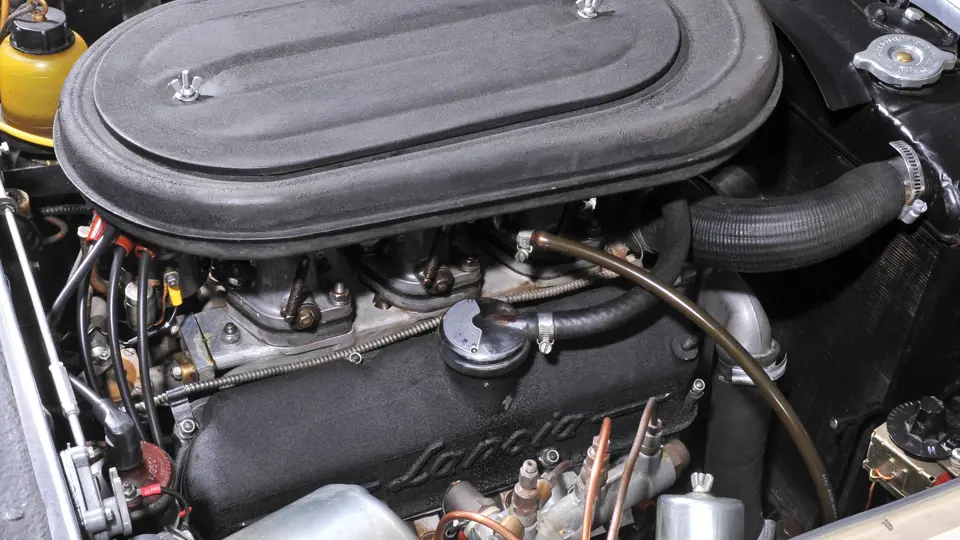


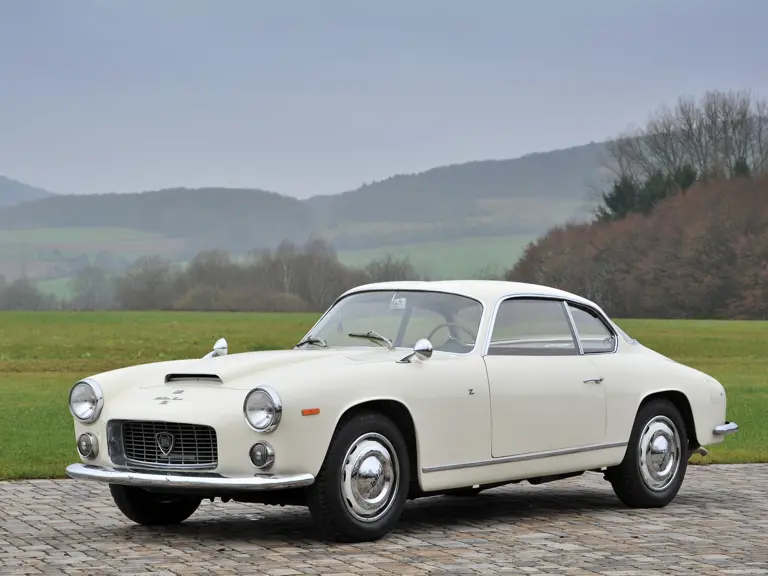
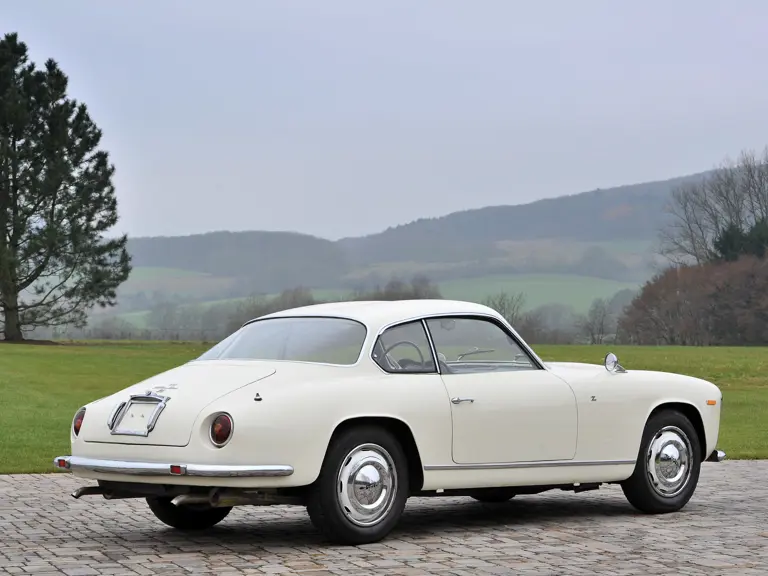
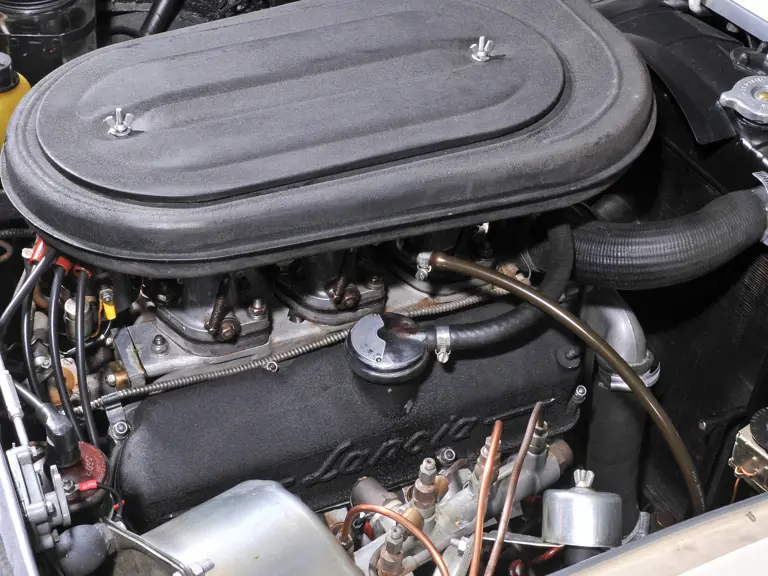
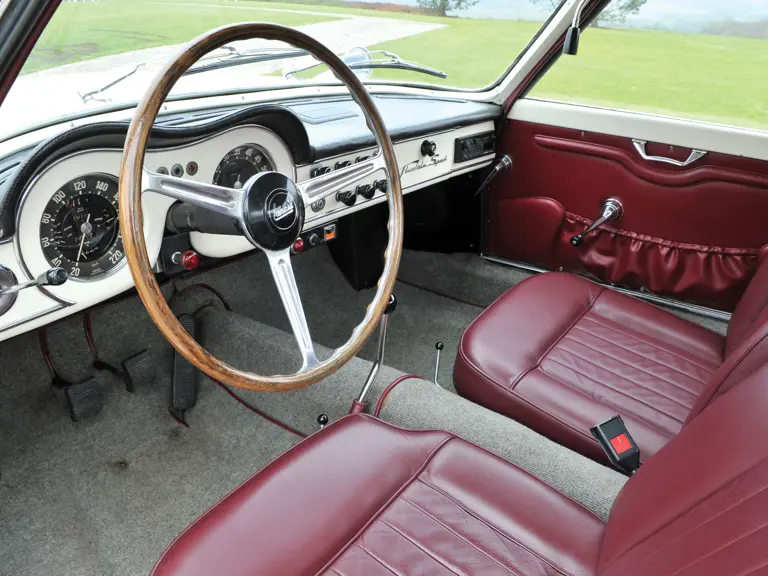
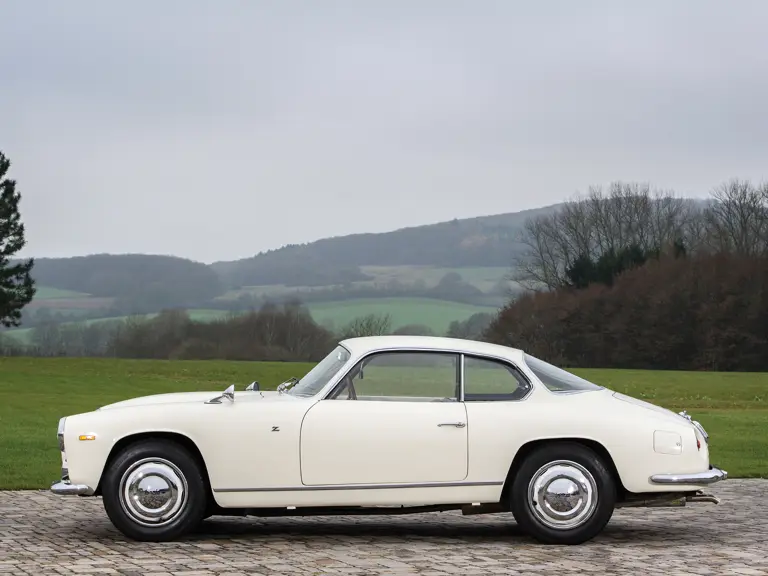
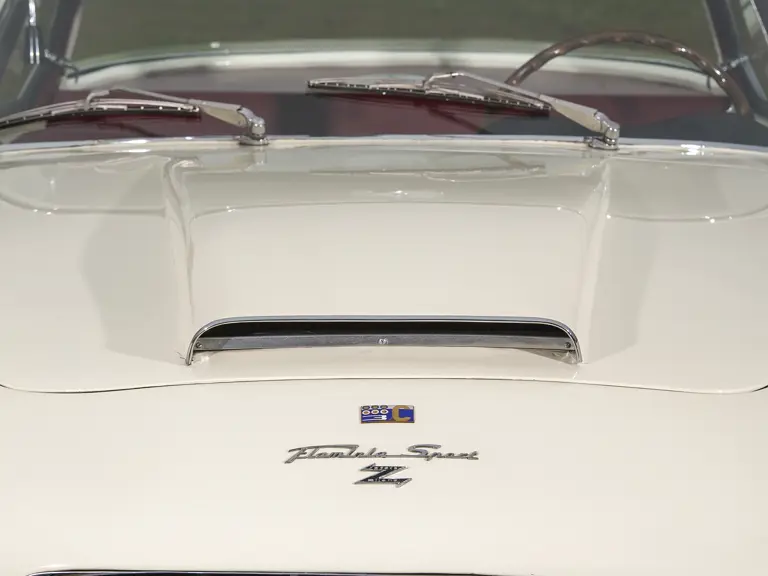
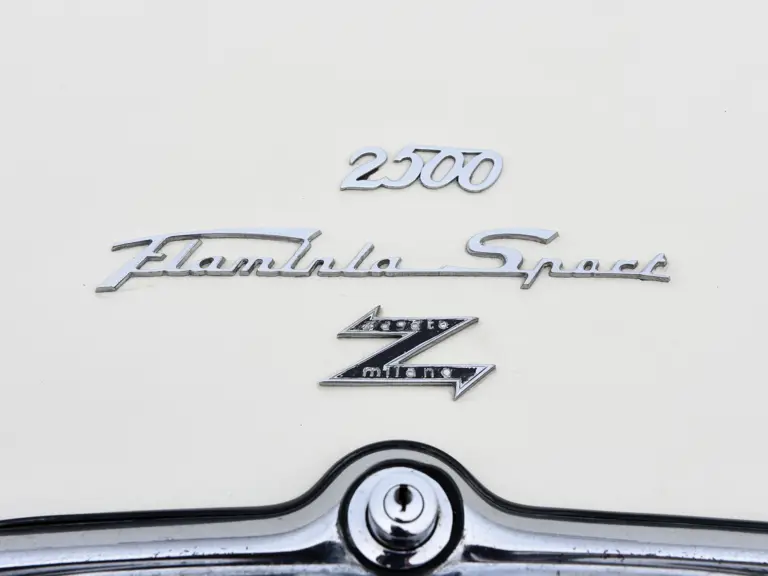

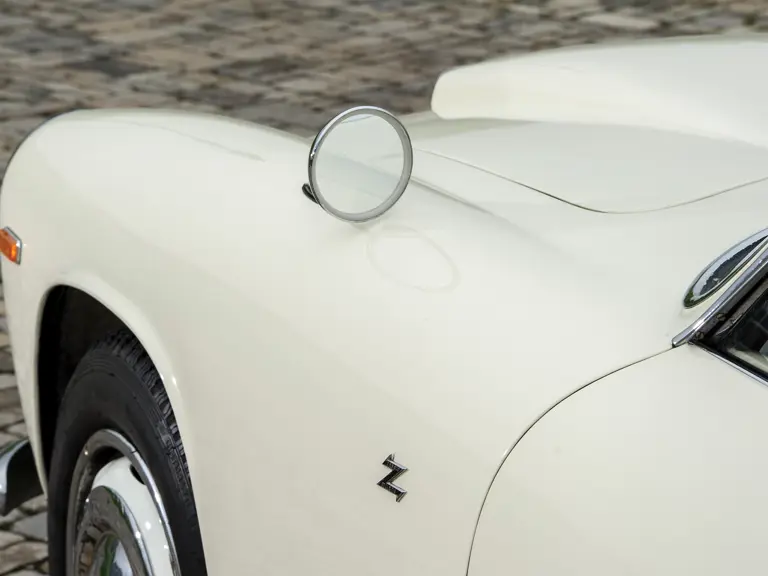
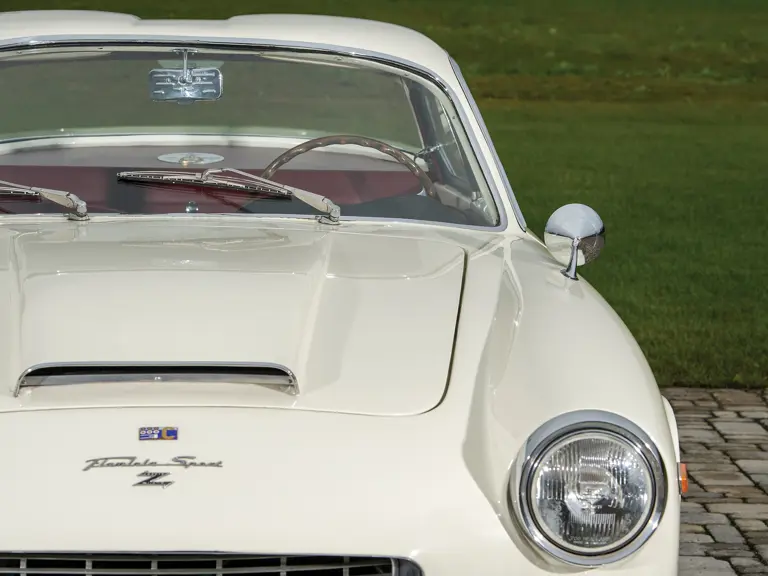
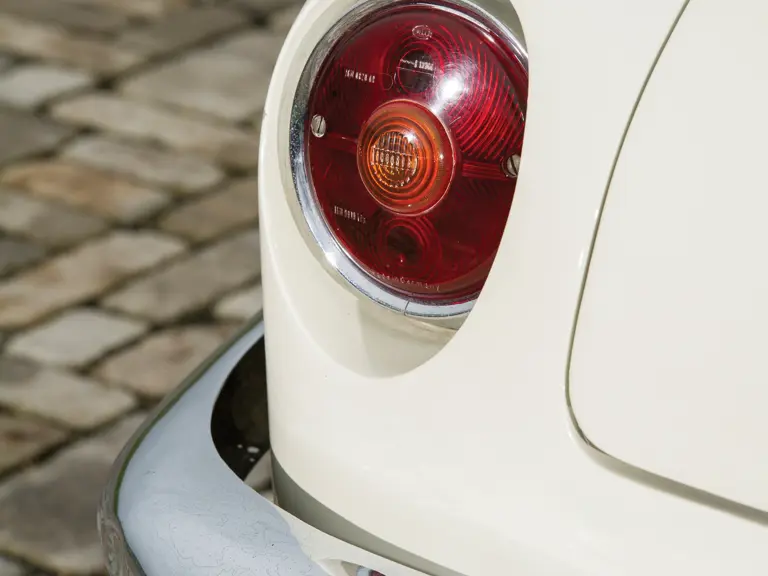
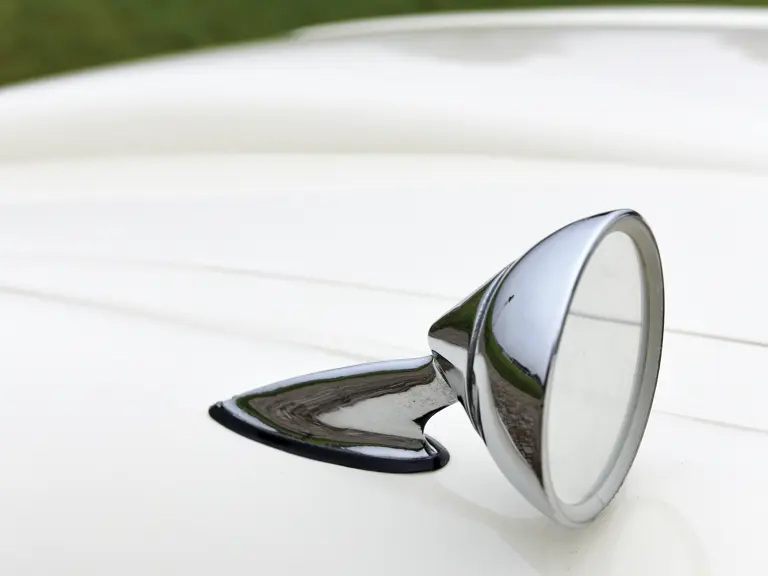
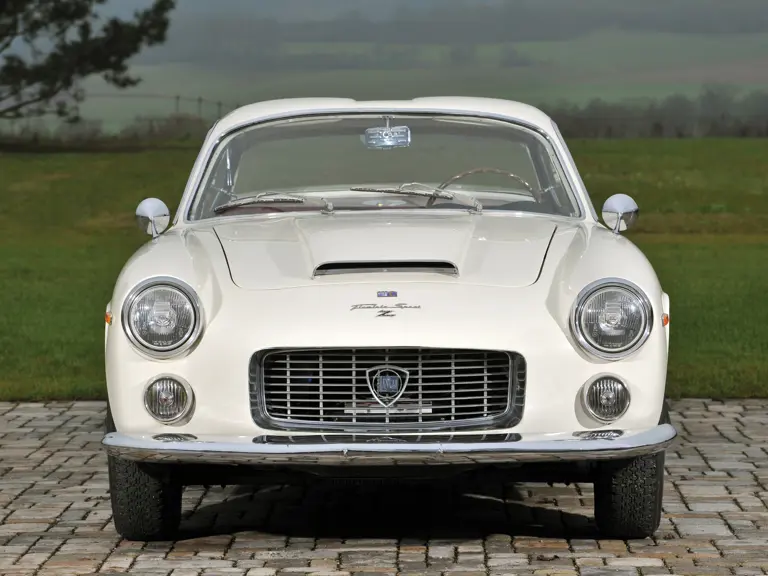
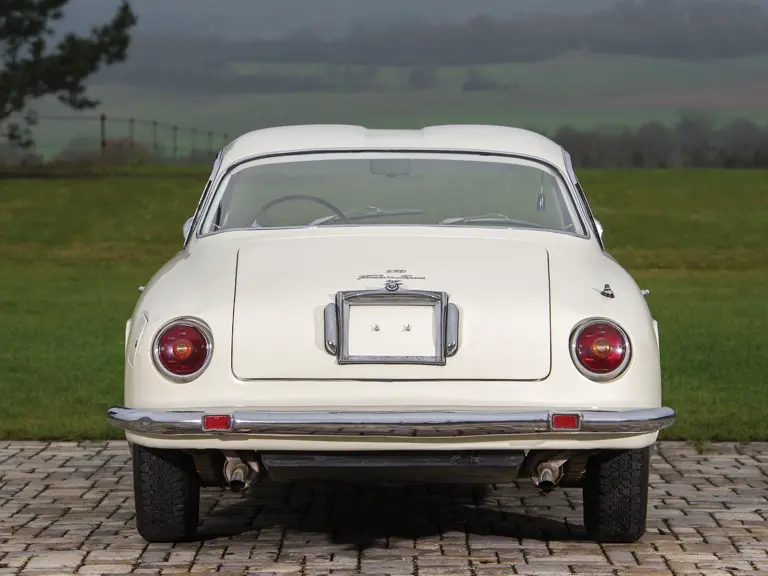
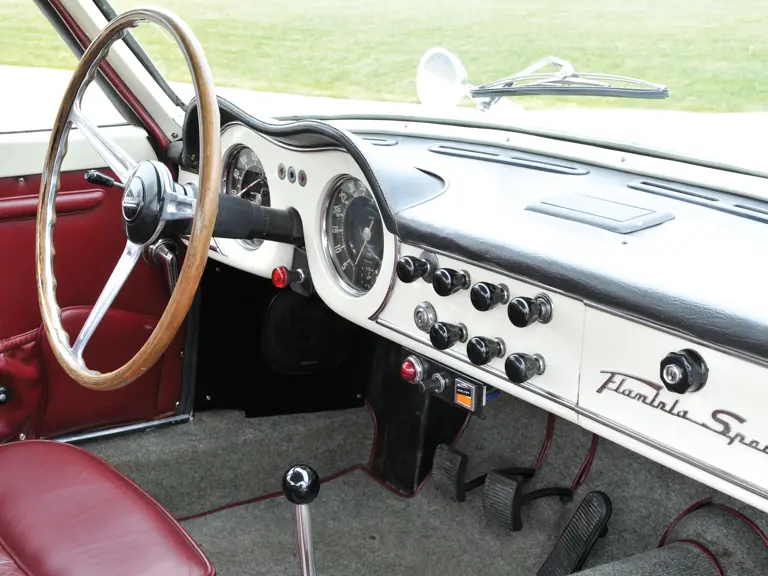

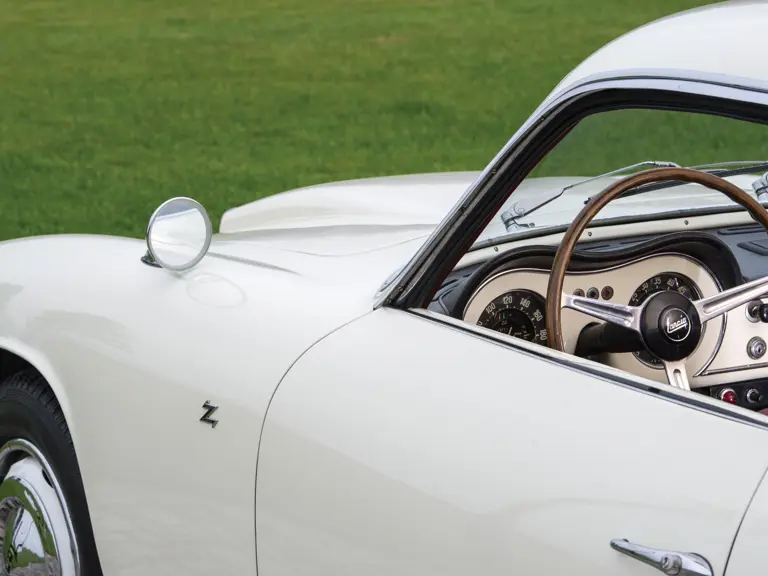
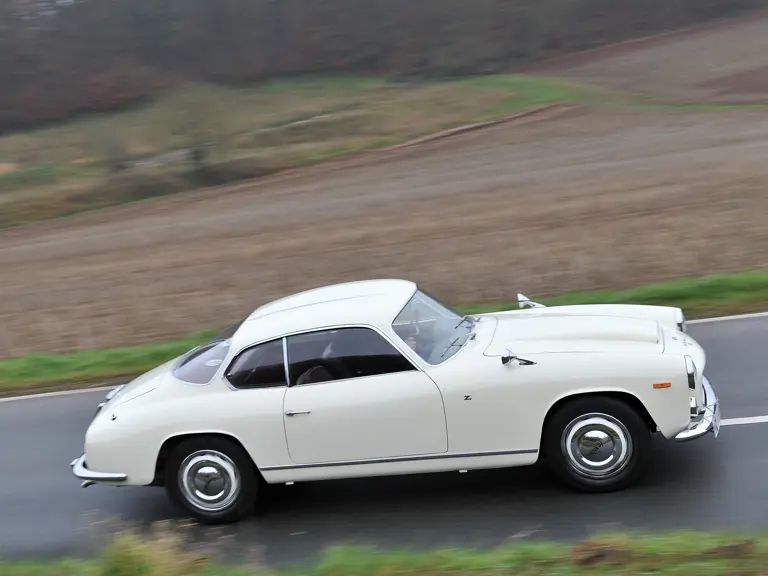
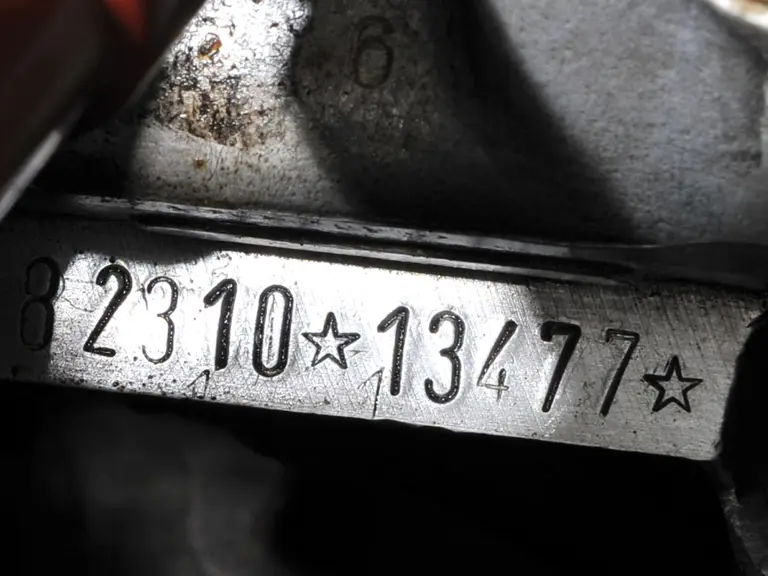
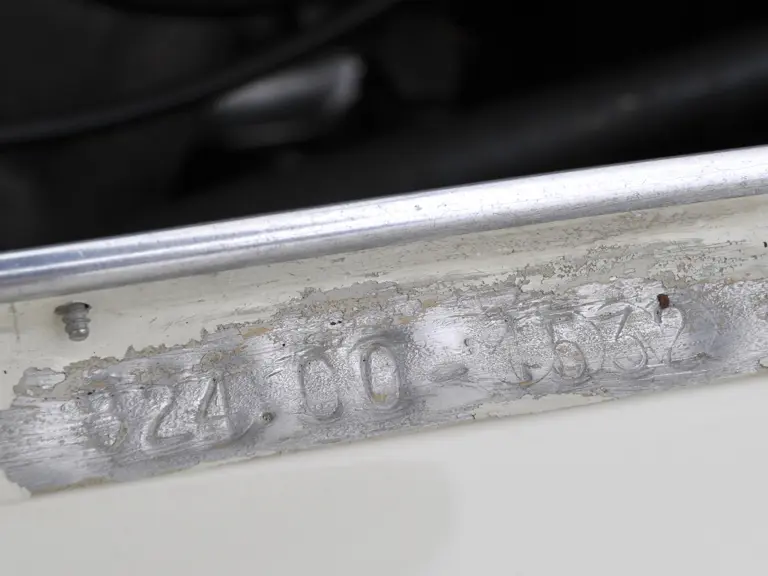
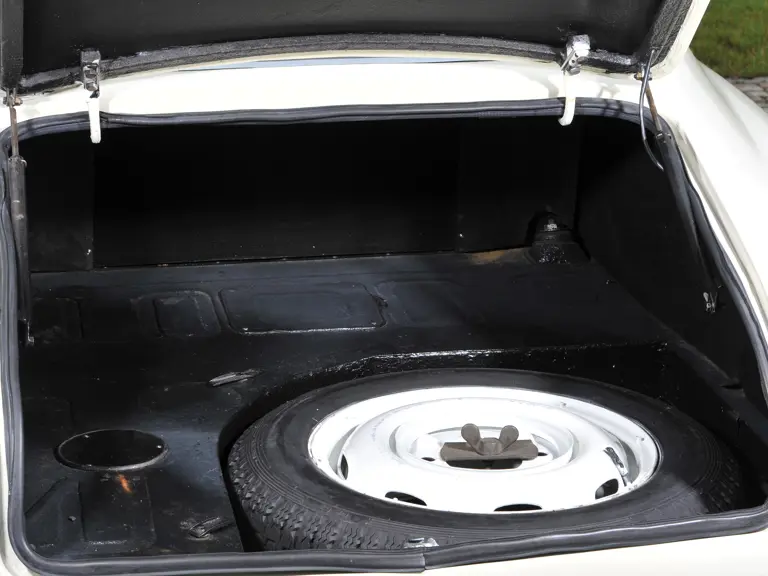
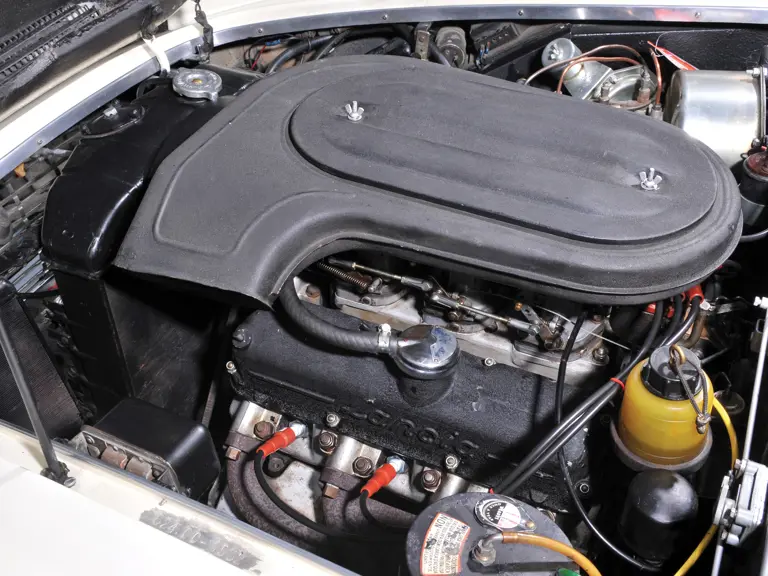
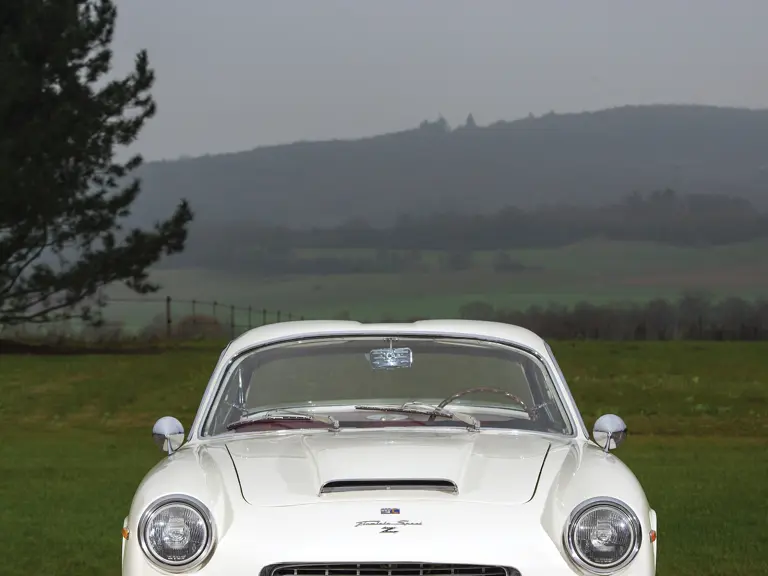
 | Paris, France
| Paris, France
